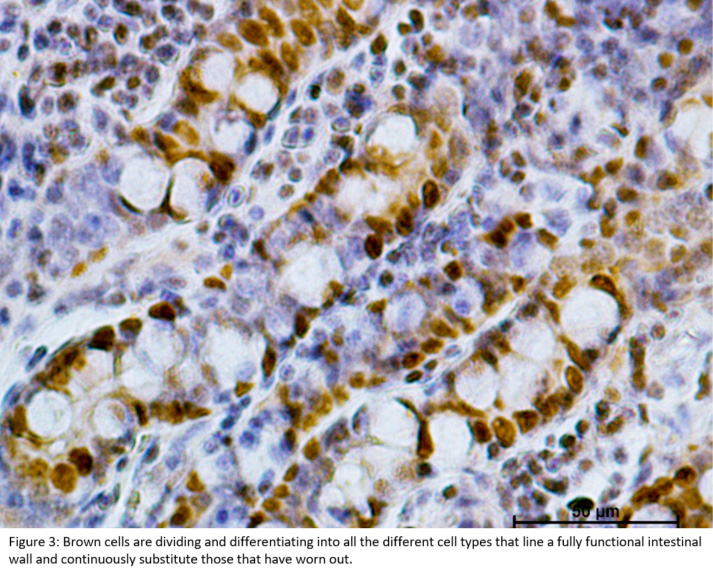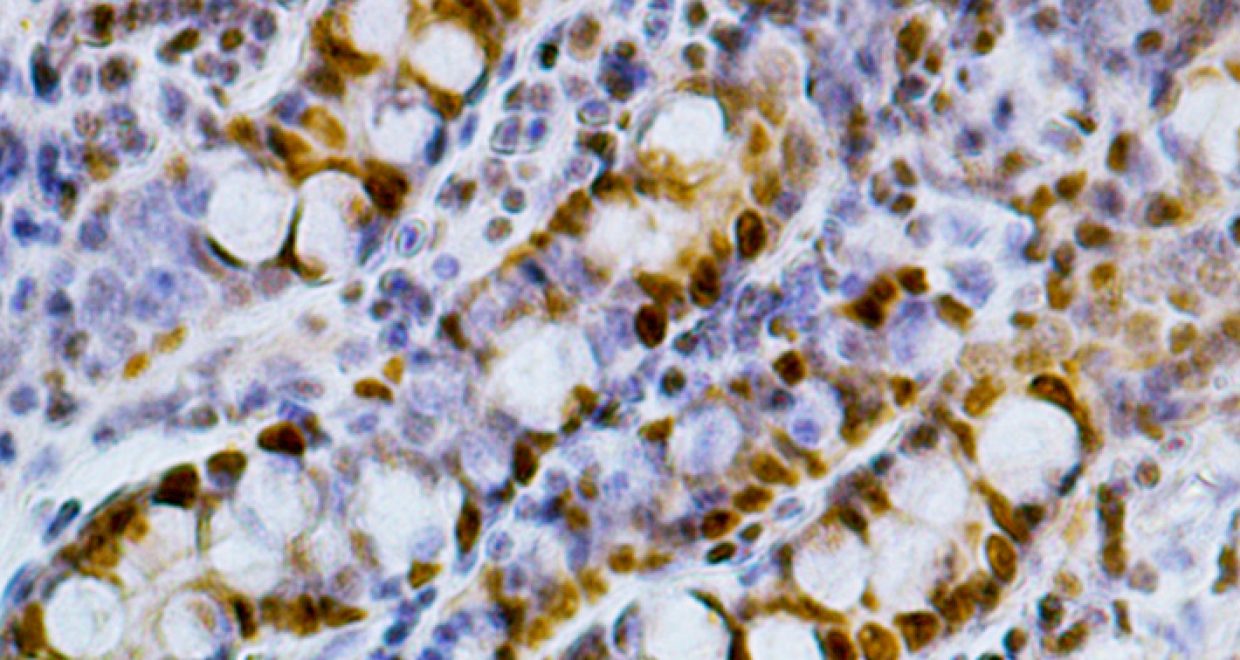New targets for reducing in-feed antibiotics
The animal article of the month for December is “Evolution of pig intestinal stem cells from birth to weaning” by N. Verdile, R. Mirmahmoudi, T. A. L. Brevini and F. Gandolfi
Antibiotic supplementation of livestock feeds has been widely used in the past to prevent pathologies and optimize growth performance, especially in the swine industry. However, such massive use has contributed to the occurrence of antibiotic resistance. Therefore, the search for efficient and safe alternatives is being pursued very actively. A better and deeper knowledge of the digestive system physiology is necessary to support such an endeavour.
In this context, the detailed description of intestinal stem cells dynamics during pig early life opens the way to future studies, aimed at targeting intestinal stem cells for the development of efficient alternatives to in-feed antibiotics.
Intestinal epithelium undergoes a complete renewal every 2-3 days. Its function and integrity are maintained by specialized multipotent intestinal stem cells located in a niche at the base of the crypts. Mouse intestinal stem cells function has been studied in detail and we know that they give rise to a pool of highly proliferative transit-amplifying cells and, subsequently, to the terminally differentiated lineages that make up the intestinal mucosa. The fate of undifferentiated epithelial cells depends on the direction of their migration. After division, the majority of cells migrate towards the tip of the villi, differentiating into enterocytes for food absorption, goblet cells or enteroendocrine cells for mucous and hormone secretion. A few cells remain within the crypt base and differentiate into Paneth cells. These play a key role in intestinal mucosa defences by secreting antimicrobial peptides, but also in the guidance of the intestinal stem cells differentiation through the secretion of factors promoting migration.
In our article, we describe the quantitative changes of the two main intestinal stem cell populations from birth to weaning in relation to the mucosa remodelling that takes place during this interval. We identified the constant presence of both quiescent and active intestinal stem cells, however, unlike the mouse, in pig both intestinal stem cell types were not confined to the crypts but were also present along the villi and on the colon luminal epithelium. Weaning induced a substantial reduction of intestinal stem cells but the active type underwent a significantly greater reduction in the small intestine than in the colon. This suggests that the two intestinal stem cells types are differentially regulated along the intestinal tracts. Overall, the pig intestinal stem cells complex has many similarities with its murine counterpart, but also has some differences. These include active intestinal stem cells not showing the typical columnar base morphology and location as well as the absence of bona fide Paneth cells.
Stem cells are responsible for self-defence and self -renewal of the intestinal mucosa. Therefore, they and their regulatory molecules represent promising targets for the identification of innovative molecules that can be effective antibiotic substitutes.



The animal article of the month for November is “Evolution of pig intestinal stem cells from birth to weaning” is freely available for a month.
Authors: N. Verdile, R. Mirmahmoudi, T. A. L. Brevini and F. Gandolfi
The animal Article of the Month is selected by the Editor-in-Chief and is freely available for one month. View the recent selections






